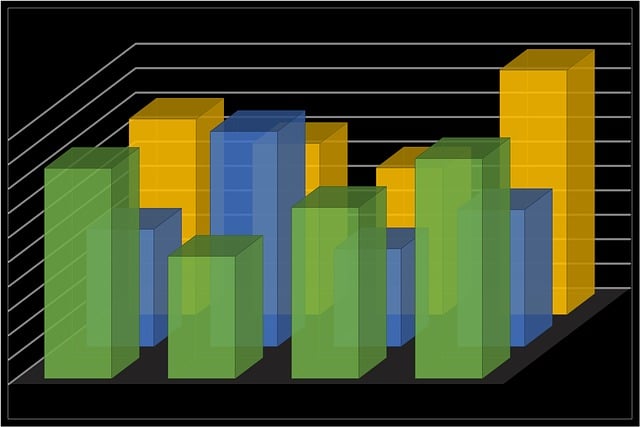Capital forecasting is a strategic process vital for predicting future financial requirements, especially capital investments needed for business growth. By gathering comprehensive data from historical records, market trends, and industry peers, companies can calibrate forecast models aligned with industry standards and expectations. Two primary methods exist: bottom-up (detailed insights demanding significant resources) and top-down (allocating capital across initiatives using tools like spreadsheets and AI). Regular reviews and adjustments are crucial to incorporate dynamic market conditions, ensuring accurate forecasts that support informed decision-making, secure funding, and avoid cash flow shortages for sustainable growth.
Capital forecasting is an essential tool for businesses aiming to fuel their growth. This critical process involves predicting future financial needs, enabling companies to make informed decisions about investments, resource allocation, and strategic planning. By understanding market trends, historical data, and industry benchmarks, organizations can accurately forecast capital requirements, ensuring they have the resources to navigate challenges and capitalize on opportunities. This article guides you through the steps of creating a robust capital forecasting model, from gathering essential data to regular adjustments for dynamic business landscapes.
- Understanding Capital Forecasting: Define capital forecasting, its purpose in business growth, and why it's crucial for financial planning.
- Gathering Data: Outline the steps to collect relevant historical data, market trends, and industry benchmarks to build an accurate forecast model.
- Creating the Forecast Model: Explain different methods (e.g., bottom-up vs. top-down) and tools to develop a robust capital forecasting model tailored to the company's needs.
- Regular Review and Adjustment: Stress the importance of periodic assessment, incorporating unpredictable factors, and updating the forecast to ensure its relevance and accuracy.
Understanding Capital Forecasting: Define capital forecasting, its purpose in business growth, and why it's crucial for financial planning.

Capital forecasting is a critical process that involves predicting future financial requirements, particularly focusing on capital investments needed for business growth. It plays a pivotal role in strategic financial planning by enabling businesses to anticipate and allocate resources effectively. The primary purpose of capital forecasting is to ensure a steady flow of funds for expansion plans, ensuring the company can seize opportunities without being hindered by cash flow constraints.
By defining future capital needs, businesses can make informed decisions about investments, whether it’s acquiring new equipment, expanding operations, or developing innovative products. Accurate capital forecasting also helps in risk management by identifying potential shortfalls and allowing for proactive measures to secure funding, thus fostering sustainable growth and financial stability.
Gathering Data: Outline the steps to collect relevant historical data, market trends, and industry benchmarks to build an accurate forecast model.

To accurately forecast capital needs for growth, gathering comprehensive data is the foundational step. Begin by collecting historical financial records specific to your organization, including revenue streams, cost structures, and past investments. These insights will reveal trends and patterns crucial for informed decision-making. Next, incorporate market trend analyses from reliable sources to understand industry dynamics and emerging opportunities or threats that may impact future capital requirements.
Additionally, benchmarking against industry peers offers valuable context. Compare key financial metrics, such as growth rates, return on investment (ROI), and capital expenditure (CapEx) ratios, with those of similar businesses. This benchmark data will help calibrate your forecast model, ensuring it aligns with industry standards and potential future performance expectations.
Creating the Forecast Model: Explain different methods (e.g., bottom-up vs. top-down) and tools to develop a robust capital forecasting model tailored to the company's needs.

Creating a robust capital forecasting model is essential for accurately predicting future financial needs and guiding strategic decision-making. There are two primary methods to approach capital forecasting: bottom-up and top-down. Bottom-up models start by examining individual projects or areas of the business, gathering data on past expenses and growth projections to estimate future capital requirements. This method offers granular insights but can be time-consuming and may require significant resources to compile data from various departments.
In contrast, top-down forecasting takes a broader perspective, starting with overall business goals and economic trends to allocate capital across different initiatives. It involves analyzing market dynamics, industry benchmarks, and strategic plans. Tools such as spreadsheet software, financial modeling platforms, and AI-driven analytics can facilitate both bottom-up and top-down approaches. By integrating historical data, growth projections, and risk assessments, these tools enable companies to build dynamic models that adapt to changing circumstances, ultimately enhancing the accuracy of capital forecasting.
Regular Review and Adjustment: Stress the importance of periodic assessment, incorporating unpredictable factors, and updating the forecast to ensure its relevance and accuracy.

Regularly reviewing and adjusting your capital forecasting models is paramount in an ever-evolving business landscape. Unpredictable market dynamics, economic shifts, and emerging trends demand dynamic adaptation. By conducting periodic assessments, you can incorporate these factors, ensuring your capital forecasts remain relevant and accurate. This proactive approach allows for informed decision-making, enabling businesses to secure adequate funding for growth opportunities while avoiding potential cash flow shortages.
Update your models as new information becomes available, whether it’s changing industry standards, regulatory updates, or shifts in consumer behavior. This continuous refinement process ensures that your capital forecasting doesn’t become stagnant but evolves with the business and market dynamics, fostering a robust growth strategy.






